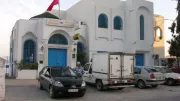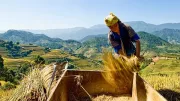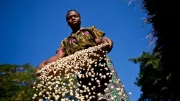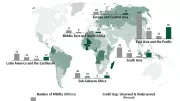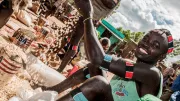Recent Blogs
Blog
Preventing the Digital Trail from Going Cold: Lessons from Mexico
In recent years, digitizing and delivering Government to Person social payments into individual recipients’ bank accounts has been considered a potential gateway to financially include significant numbers of poor people. A five-year project in Mexico is analyzed to help answer key questions.Blog
La Poste Tunisienne: A Powerful Tool for Financial Inclusion
There are six million postal financial accounts in Tunisia, impressive for a population of 11 million. In fact, La Poste is the best known and first cited financial institution in Tunisia and shows great promise for financial inclusion.Blog
Postal Networks: a Physical Link to the Digital Economy
The latest White Paper from the U.S. Postal Service exploring the potential to build its existing financial services products to help the poor is getting a lot of ink in the press, and rightfully so.Blog
Designing Mobile Microinsurance Products: Premium Payment Methods
Mobile microinsurance products are not only growing in number, but they are also reaching people in many of the world’s poorest countries.Blog
The Global Landscape of Mobile Microinsurance
Since 2010, two-thirds of all new mobile microinsurance products were launched in low-income countries, particularly in Sub-Saharan Africa. A number of these were by non-traditional players innovating through new channels and with new products.Blog
Could India’s Unique ID be a Financial Inclusion Game-Changer?
The Indian government’s plan to provide every resident with a unique biometrically linked identity number is an exciting development for those of us dedicated to broadening financial access to unbanked people worldwide.Blog
Understanding Smallholder Demand for Financial Services
Smallholder families represent the largest global segment of those living on less than $2 a day, yet relatively little is known about their demand for financial services.Blog
How Do Smallholder Farmers Access Information?
Even though making information “mobile” can increase outreach to smallholder farmers, the potential of mobile information services far exceeds farmers’ current demand for it. Mobile phones are not a panacea, and many farmers prefer more traditional sources of information.Blog
The Case for Branchless Banking in Thousand Islands, Indonesia
In Thousand Islands, Indonesia, financial access is virtually nonexistent. Since most residents have mobile phones, the introduction of branchless banking could bridge the access gap and help improve the lives of the islands' residents.Blog
Smallholder Financing: Meeting Demand Between Harvests
For smallholder farms, expenses come early in the season before the planting while income arrives only several months later with the harvest. How, then, can these farmers access the cash they need to plant their crops and, more importantly, to survive between harvests?Blog
Does Facebook Represent the Future of International Remittances?
Though it may be a long way off, the "what if" of social networks playing a role in international remittances is exciting. Networks like Facebook and China's RenRen increasingly reach financially-excluded portions of the population and may have the potential to generate significant transaction volumes in places where m-wallets have struggled.Blog
Can Voice Corridors be Used to Predict Mobile Money Hotspots?
Voice corridors aren't direct predictors of mobile money hotspots. But, this information can be valuable to mobile providers launching new services, since voice and mobile money corridors often overlap in new markets.Blog
10 Things You May Not Know about Postal Networks
Postal networks have undertaken major transformations. They are increasingly leveraging their branch networks to play a role in financial services, and many are emerging as important gateways for financial inclusion of the world's poor.Blog
Banking on Including Women in Nigeria
In Nigeria, Diamond Bank is using customer insights to design and market a new savings product for women.Blog
Closing the MSME Credit Gap for the Informal Sector
An estimated 80 percent of enterprises in developing economies - approximately 280-340 million - are informal firm. Bringing these enterprises into the formal sector requires specialized approaches, due to the varying degree of informality across countries.Blog
Closing the Credit Gap for Micro, Small and Medium Enterprises
Micro, small and medium enterprises face many obstacles in developing countries, but access to finance remains by far the most cited obstacle experienced by firms trying to formalize, grow and increase productivity.Blog
Can MFIs Leverage Mobile Banking to Serve Customers Better?
When given the choice of using a mobile payment platform - bKash - or a traditional bank branch, 42% of business borrowers in a BRAC pilot chose to use both options for making payments.Blog
The Worrying Trend of Interest Rate Caps in Africa
Many countries in Africa have established interest rate ceilings to protect consumers from high interest rates charged by microlenders. However, despite good intentions, interest rate ceilings can actually hurt low-income populations by limiting their access to finance and reducing price transparency.Blog
Understanding Customers for Financial Innovation in Ghana
The branchless banking market in Ghana is promising but has not gained traction as expected. CGAP and Tigo Cash decided to collaborate in order to better understand what’s preventing Ghanaian customers from actively using mobile money.Blog


